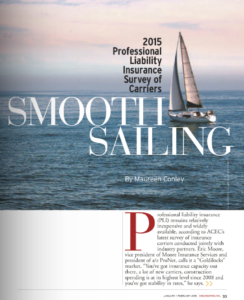The word standard implies many things. A bar to be cleared; a rubric to be followed. But for design professionals, the word becomes tricky when applied to contracts. Project owners often want to keep things simple by requiring so-called Standard Contracts for all parties. This is a problem for architects and engineers, especially from an insurance perspective.

The following are a few Frequently Asked Questions we see from architects and engineers on this issue:
My project Owner insists on using their own contract for hiring my professional services. They are adamant this is a Standard Contract. How should I respond?
There is no such thing as a Standard Contract. Be sure to read each contract submitted by your clients carefully. You need to understand both the client’s expectations and your firm’s rights and responsibilities. It is a good idea to have all owner-drafted agreements reviewed by your attorney and/or insurance broker. This will help to determine whether you are accepting responsibility beyond what common law would hold you to in the absence of the agreement. If, for example, you agree to accountability beyond the protection afforded by your professional liability insurance, that’s a problem.
When I perform professional services for a Contractor in lieu of an Owner, should I be concerned?
Yes. Construction contracts are not meant to be used in this arrangement; they are not designed to meet the needs of the design professional.
What are some of the problems with using “construction contracts” for design services?
Construction contracts are problematic for design professionals. A General Contractor’s contract with a project Owner includes certain requirements (e.g. means, methods, procedures, sequences, safety, etc.). These requirements trickle down to construction subcontractors the verbiage of construction contracts. Beyond that, none of these requirements meet the test of what a design professional should required to do on the same job.
Contract document libraries available via the AIA and EJCDC can be a good place for design professionals to begin. These are standard in the sense that they are templates. However, it’s still important to seek individualized guidance from your attorney and/or insurance broker.
What are some of the other problems with utilizing “construction contracts” for design services?
Most construction contracts contain warranties/guarantees, and some have performance standards. To our knowledge, all professional liability insurance policies for design professionals exclude coverage for warranties/guarantees and (likely) performance standards. Remember: if you commit your design firm to more responsibility than the law expects of you, your insurance policy cannot protect you the way that it should.
We hope you’ve found this helpful. As always, be sure to contact your local a/e ProNet broker if you have further questions.








